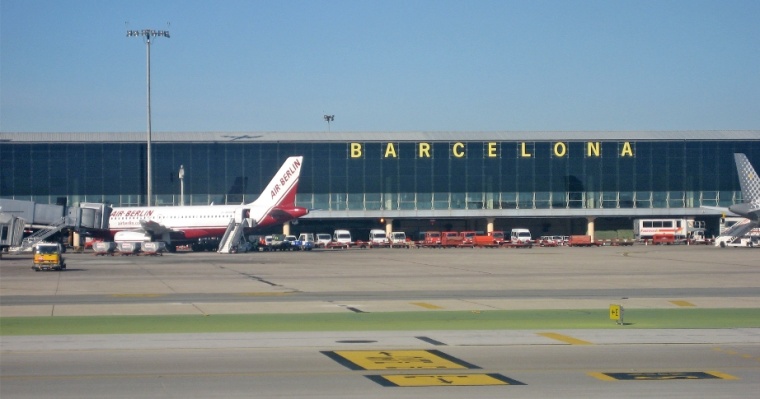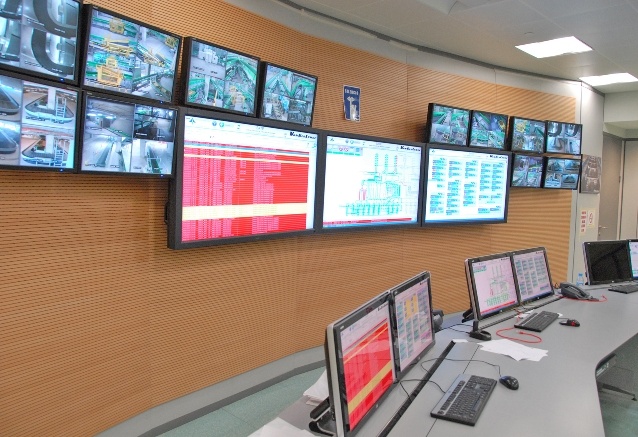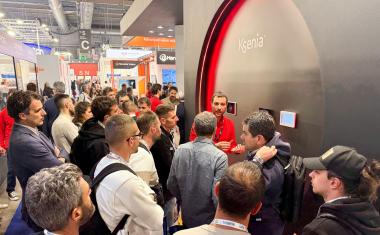Security for Barcelona’s ‘El Prat’ Terminal 1
Siemens has supplied the security for the largest infrastructure project created in the Catalan region of Spain in the last 20 years. The new Terminal 1 at Barcelona International ...


Siemens has supplied the security for the largest infrastructure project created in the Catalan region of Spain in the last 20 years. The new Terminal 1 at Barcelona International Airport (also known as El Prat de Llobregat Aeropuerto), the second largest airport in Spain, was inaugurated on 17 June 2009, consolidating Barcelona's place amongst the most important air hubs in Europe.
Through its group company TECOSA, Siemens installed the support elements for all the public information systems throughout the airport. Additionally TECOSA supplied to the Airport Management Centre all the operator positions and also carried out the integration of the video walls from Barco facilitating the control of the maintenance and operation services for the airport itself and the information systems for passengers. Furthermore TECOSA also has ongoing responsibility for the maintenance of the access control and video surveillance systems.
One of the largest civil engineering projects ever undertaken in Europe, Terminal 1 is an extremely functional complex in terms of logistics, combining advanced technology and passenger service. The architecture combines a multicultural character with the luminosity and environmental warmth of Mediterranean style, with natural light a feature in all passenger areas. The result is a communications hub and user-friendly service-centre that blends with the surrounding areas of ecological interest with minimal impact. The T1 complex is based around three elements: the passenger processing building which comprises the check-in, baggage reclaim and airside shopping areas; two lateral docks and one longitudinal dock for passenger boarding; and a lobby where the various transport systems come together.
Security and Fire Protection
At the security points controlling entry to the passenger departure lounge, Siemens installed walk-through scanners with pulse induction, multi-zone, metal detection that locates weapons and devices in footwear (as well as those concealed on other parts of the body) - therefore eliminating the irritation of passengers having to remove their shoes. At the automatic luggage system SATE (Sistema Automático de Tratamiento de Equipajes), Siemens installed scanning equipment for secondary luggage inspection. The Siemens Building Technologies Division was also commissioned to install the Sinteso fire protection system within the terminal. The centralised system runs on a MK8000 OPC server and includes 24 CC1143 fire control panels (with the capacity for 2,000 elements each), 27,000 fire detectors, 1,900 manual call points and 70 aspirating smoke detectors.
Business Partner
Siemens Smart InfrastructureTheilerstrasse 1a
6300 Zug
Switzerland
most read

Ksenia Security Highlights from Sicurezza 2025
Sicurezza 2025 has just concluded in Milan: For three days, the fair was a dynamic meeting point, where thousands of visitors crowded the exhibition halls, taking the opportunity to discover the latest solutions and engage with experts and industry professionals.

Idis Europe: Amy Brown to drive sales growth in the north
Idis has further strengthened its UK sales operations with two key appointments: Carl Scarrott has joined the company as Regional Sales Manager for the south region, and Amy Brown has taken up the role of Regional Sales Manager for the north. These latest appointments follow the recent announcement of Brian Lee as the new Managing Director of Idis Europe.

Skills for Security welcomes Axis Communications as new Platinum Sponsor
Skills for Security, the UK’s leading fire and security apprenticeship training provider, is proud to welcome Axis Communications as its latest Platinum Sponsor, with an aim to focus on practical skills development and raising professional standards.

Wagner at Buildinx 2025: Digitalization and Sustainability in Fire Protection
Wagner presents fire protection solutions for logistics properties at Buildinx 2025 at booth 5.B80

Michelangelo: A Multi-Domain Security Architecture for Critical Infrastructure Protection
Leonardo unveiled “Michelangelo Dome” at the Officine Farneto in Rome, introducing a new, advanced integrated defence system designed to counter emerging threats in an increasingly complex global landscape.









